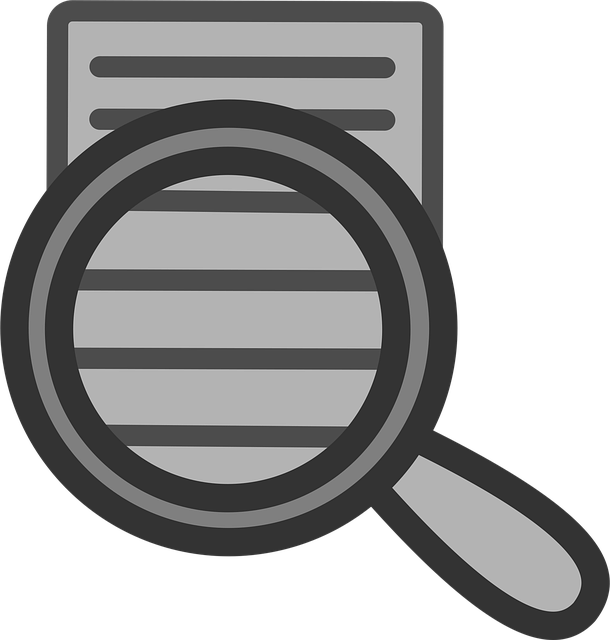In the realm of study abroad and exchange programs, Study Abroad or Exchange Program Documents demand precise translation for successful participation. Inaccurate translations can cause significant delays, eligibility issues, and financial losses. Professional certification is crucial to ensure smooth processes, as these translators understand both language and culture, facilitating international students' academic journeys. Certification from recognized bodies ensures document credibility, while professional translators navigate complex terminology and map varying educational systems globally. Adhering to best practices, including engaging certified services and rigorous proofreading, guarantees document integrity and a seamless transition into international academia. Understanding host nation requirements and proper documentation procedures is vital for a smooth study abroad experience.
“Embarking on an academic-grade study abroad journey requires meticulous documentation translation. This article delves into the critical aspect of accurate and certified translations for international education documents, essential for a seamless global student experience. We explore why professional translation matters, the role of certification, and common challenges faced by students and institutions alike. Furthermore, best practices are outlined to ensure quality and authenticity, along with a comprehensive guide to navigating legal requirements for study abroad or exchange program documents.”
- Understanding the Significance of Accurate Translation in Study Abroad Programs
- The Role of Certification in International Education Documents
- Common Challenges in Translating Academic Records for Global Students
- Best Practices for Ensuring Quality and Authenticity in Document Translation
- Navigating Legal and Educational Requirements: A Comprehensive Guide
Understanding the Significance of Accurate Translation in Study Abroad Programs
In the realm of study abroad or exchange program documents, accurate translation holds immense significance. These programs often involve intricate academic and administrative processes, necessitating precise communication across languages. Whether it’s applying for visas, enrolling in courses, or accessing crucial research materials, every piece of information needs to be conveyed with exactness to avoid misunderstandings and ensure a smooth experience for international students.
The impact of inaccurate translation can be profound. Miscommunications may lead to delays in program participation, eligibility issues, and even financial losses. Therefore, when it comes to study abroad or exchange program documents, seeking professional certification for translations is paramount. It guarantees that all paperwork—from transcripts to health records—is handled by skilled translators who understand not just the words but also the cultural nuances and academic terminology, fostering a seamless transition for students embarking on their international educational journey.
The Role of Certification in International Education Documents
In the realm of international education, especially with growing popularity of study abroad or exchange program documents, certification plays a pivotal role in ensuring authenticity and reliability. When students submit applications for academic programs overseas, their documents must be translated accurately and legally to meet foreign university requirements. This is where professional certification comes into play. Certified translators are trained to handle the nuances of various languages and disciplines, ensuring that every word translates seamlessly across contexts. They employ specialized knowledge to navigate complex terminology specific to study abroad or exchange program documents, maintaining academic integrity throughout the translation process.
Furthermore, certifying bodies often stamp their seal of approval on these translated documents, adding an extra layer of credibility. This certification not only guarantees the accuracy of translations but also facilitates smoother processes for students seeking international opportunities. It’s a crucial step in the journey of study abroad or exchange program documents, ensuring that academic qualifications are conveyed properly and enabling students to access quality education globally.
Common Challenges in Translating Academic Records for Global Students
Translating academic records for students participating in study abroad or exchange programs comes with unique challenges. One of the primary hurdles is understanding and accurately representing educational systems and terminology from different countries, which can significantly vary. Each nation has its own set of qualifications, course structures, and grading scales that must be meticulously mapped to a common standard for certification. This complex process requires deep cultural sensitivity and an in-depth knowledge of both languages to avoid misinterpretations or loss in translation.
Additionally, official documents often include intricate details about academic achievements, such as coursework, assessments, and research, which need to be conveyed accurately. Even minor errors or omissions can impact a student’s eligibility for academic credit or admission into their chosen program. Therefore, it’s crucial to engage professional translators who are well-versed in both the source and target languages and have experience handling international education documentation. This ensures that study abroad or exchange program documents are translated with precision, maintaining their integrity and value throughout the certification process.
Best Practices for Ensuring Quality and Authenticity in Document Translation
When translating study abroad or exchange program documents, maintaining quality and authenticity is paramount to ensure a seamless experience for students. The best practices involve engaging professional translators with expertise in academic language and cultural nuances specific to study programs. Using certified translation services that provide a seal of approval from recognized authorities guarantees the document’s integrity and acceptance by institutions abroad.
Additionally, double-checking the translated documents for accuracy and clarity is crucial. This involves rigorous proofreading to ensure not just linguistic precision but also the preservation of original formatting and structural elements essential for study abroad or exchange program documents. Implementing these best practices ensures that translated materials accurately represent the student’s qualifications and intentions, thereby facilitating a smooth transition into their international academic journey.
Navigating Legal and Educational Requirements: A Comprehensive Guide
Navigating the legal and educational requirements for a study abroad or exchange program can seem daunting, but it’s a crucial step to ensure a smooth transition into your international academic journey. Each country has its own set of rules and regulations regarding foreign student documentation, making it essential to understand these processes thoroughly. The first step is to familiarize yourself with the specific demands of the host nation; this includes verifying the acceptance of foreign qualifications, understanding visa requirements, and knowing how to translate and authenticate your study abroad or exchange program documents.
A comprehensive guide should outline the necessary steps for document translation and certification. This involves locating reputable translation services capable of handling academic papers accurately and professionally. Additionally, ensuring that translated documents are legalized or apostilled by authorized government bodies is vital. These processes verify the authenticity of your papers, making them acceptable to educational institutions abroad. Remember, proper documentation not only guarantees your admission but also facilitates a smoother process during your stay overseas.
When navigating the complexities of academic-grade study abroad programs, precise translation with certification is paramount. By understanding the significance of accurate translations and recognizing the value of certification in international education documents, students can ensure their academic records are globally recognized. Overcoming common challenges and adhering to best practices guarantees the quality and authenticity of these crucial documents. This comprehensive guide equips individuals embarking on exchange programs to navigate legal and educational requirements with confidence, ensuring a smooth transition into their international academic journey.



